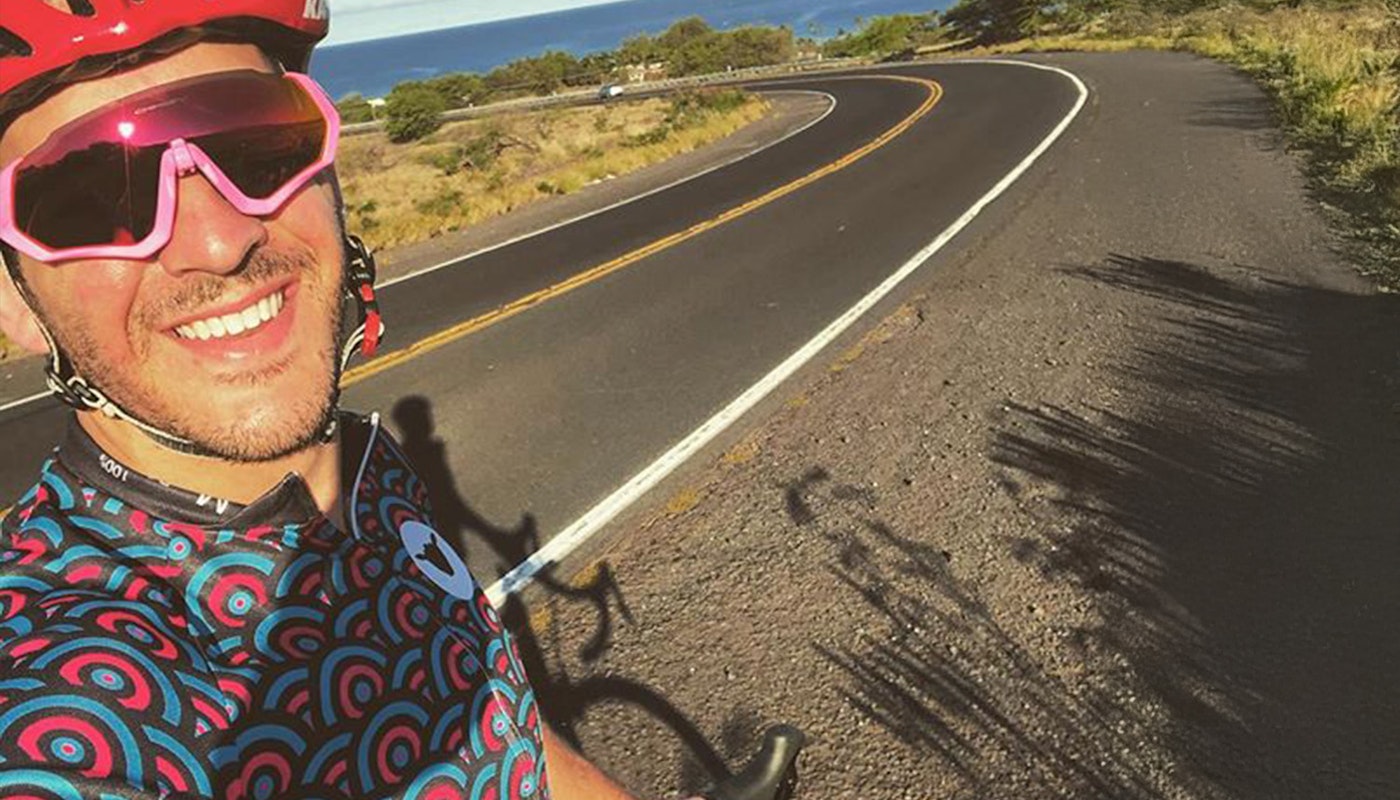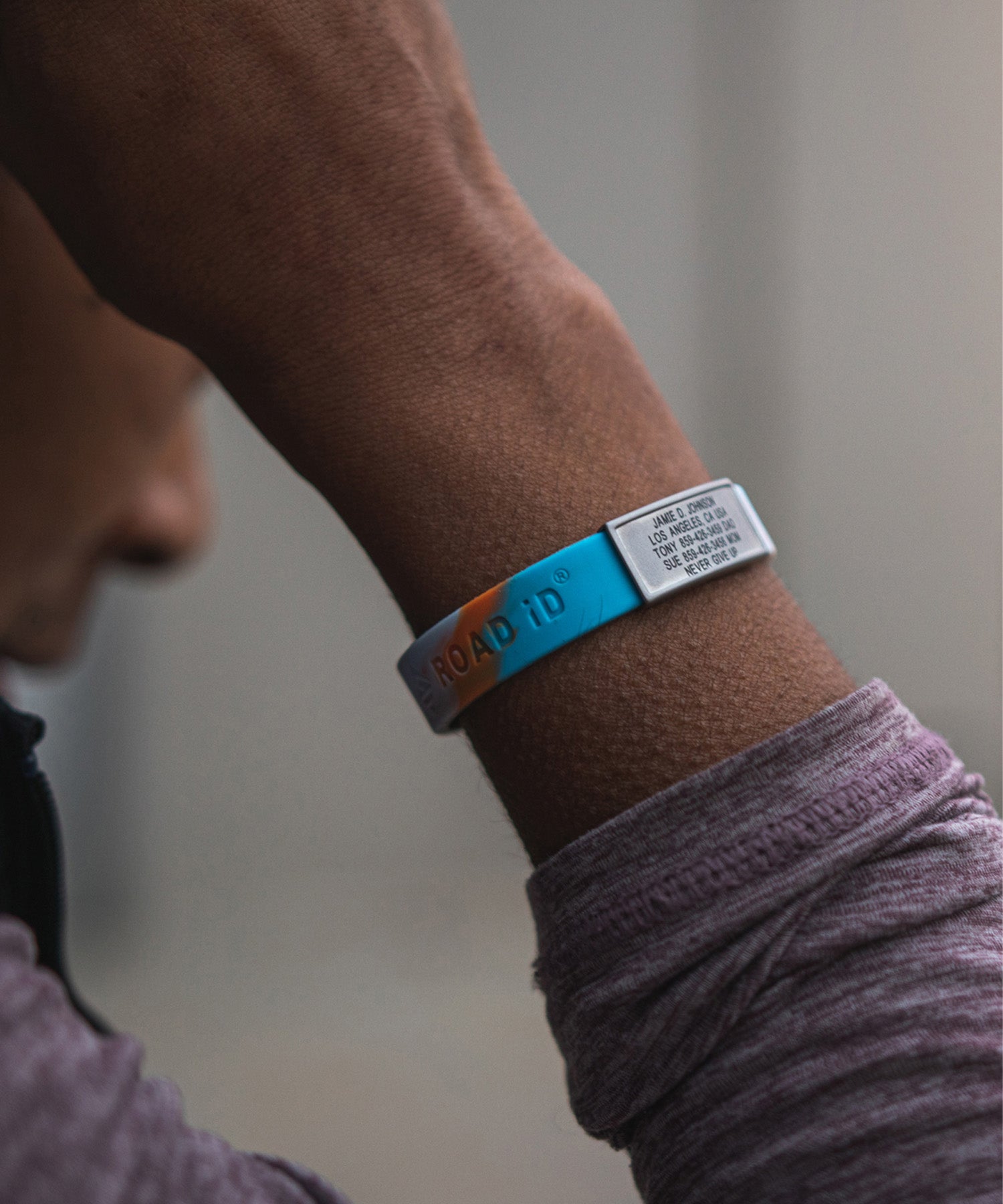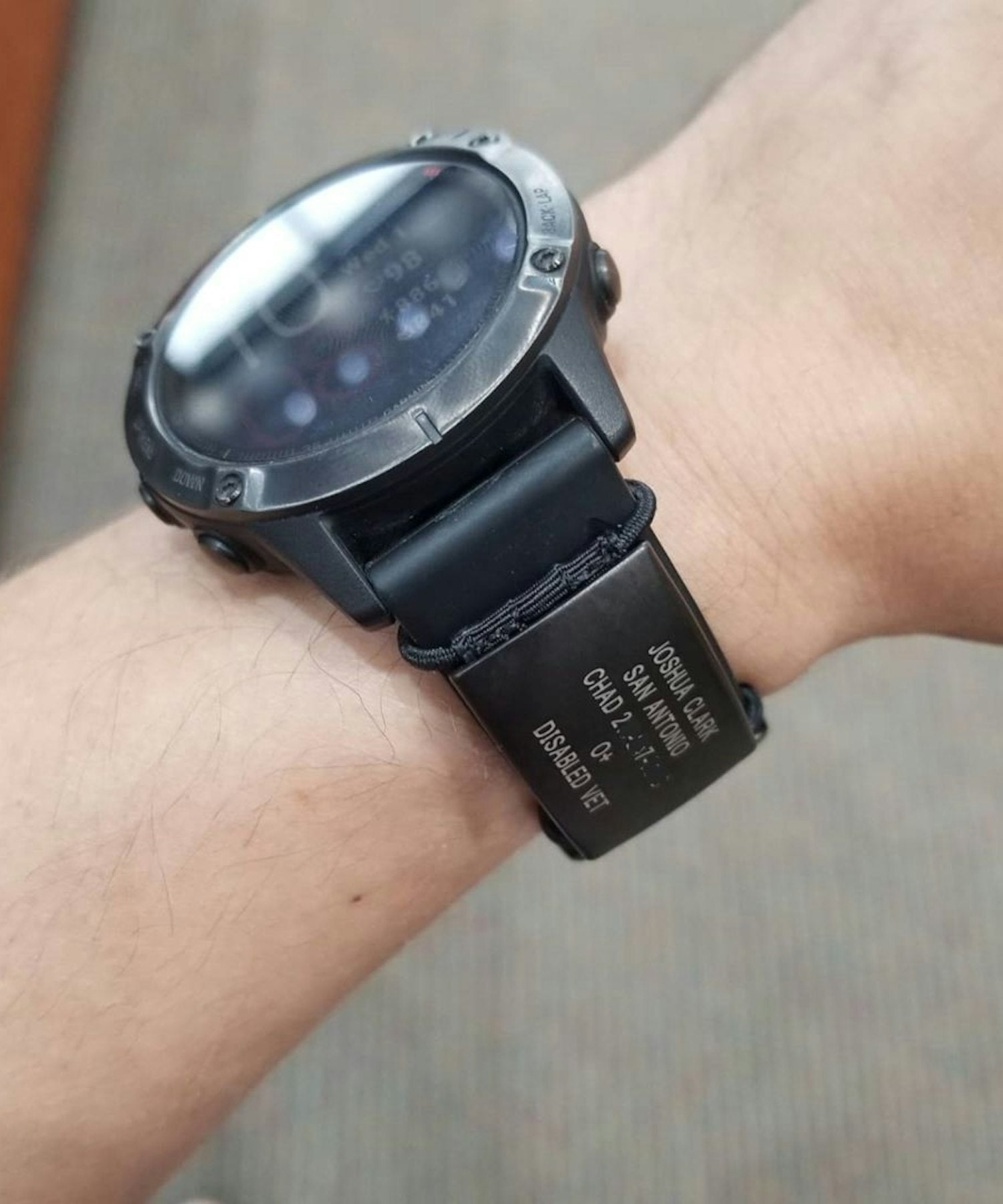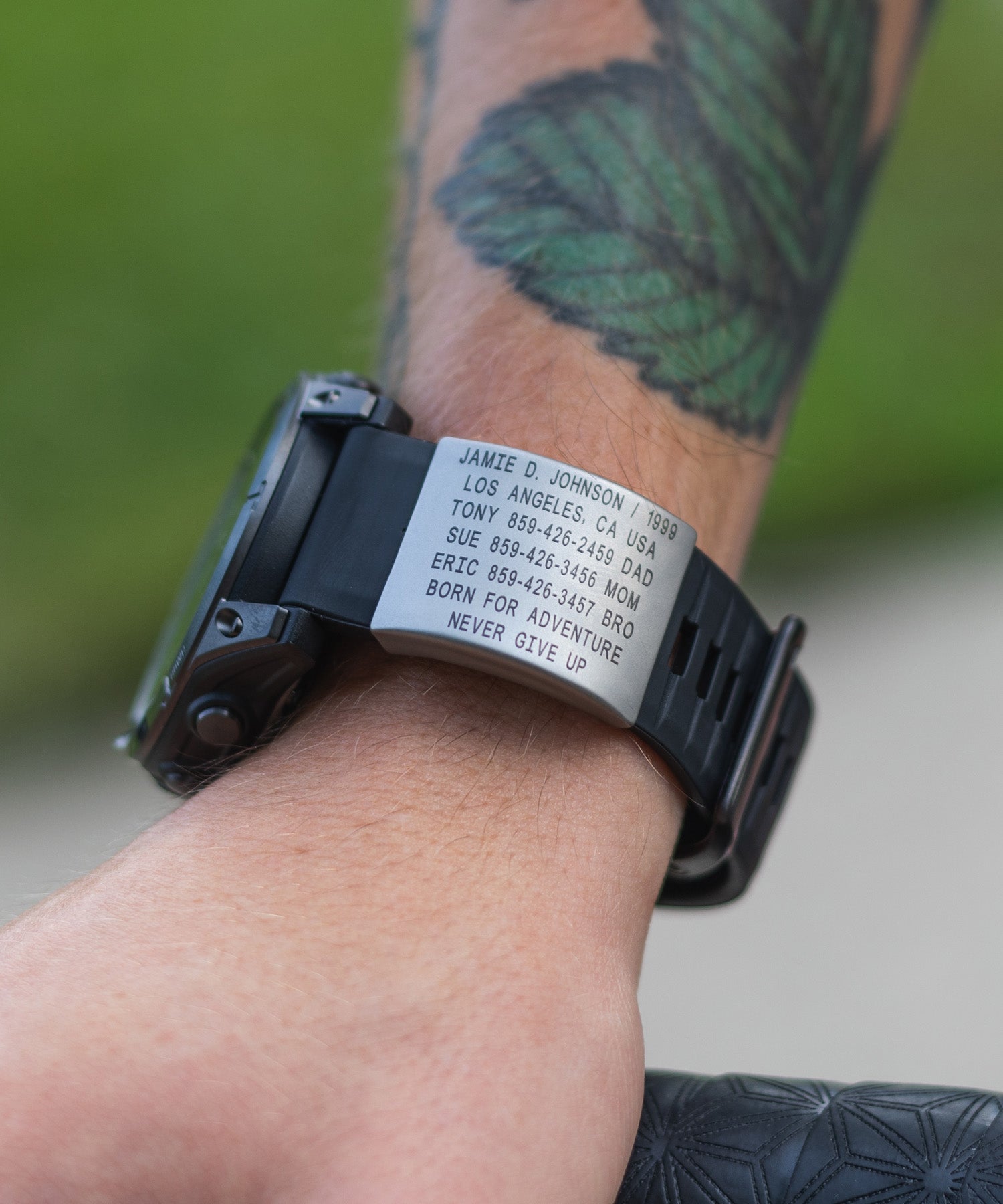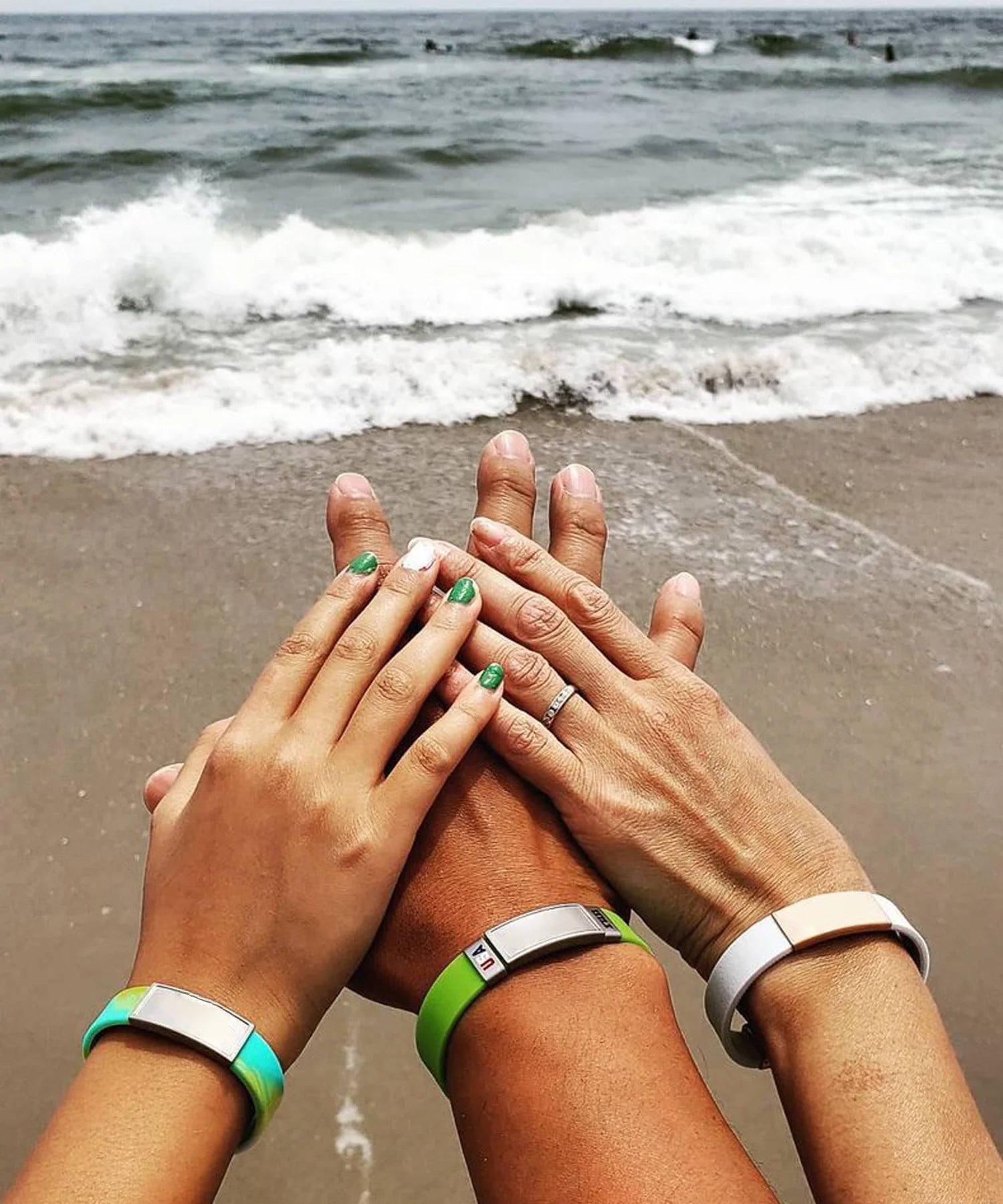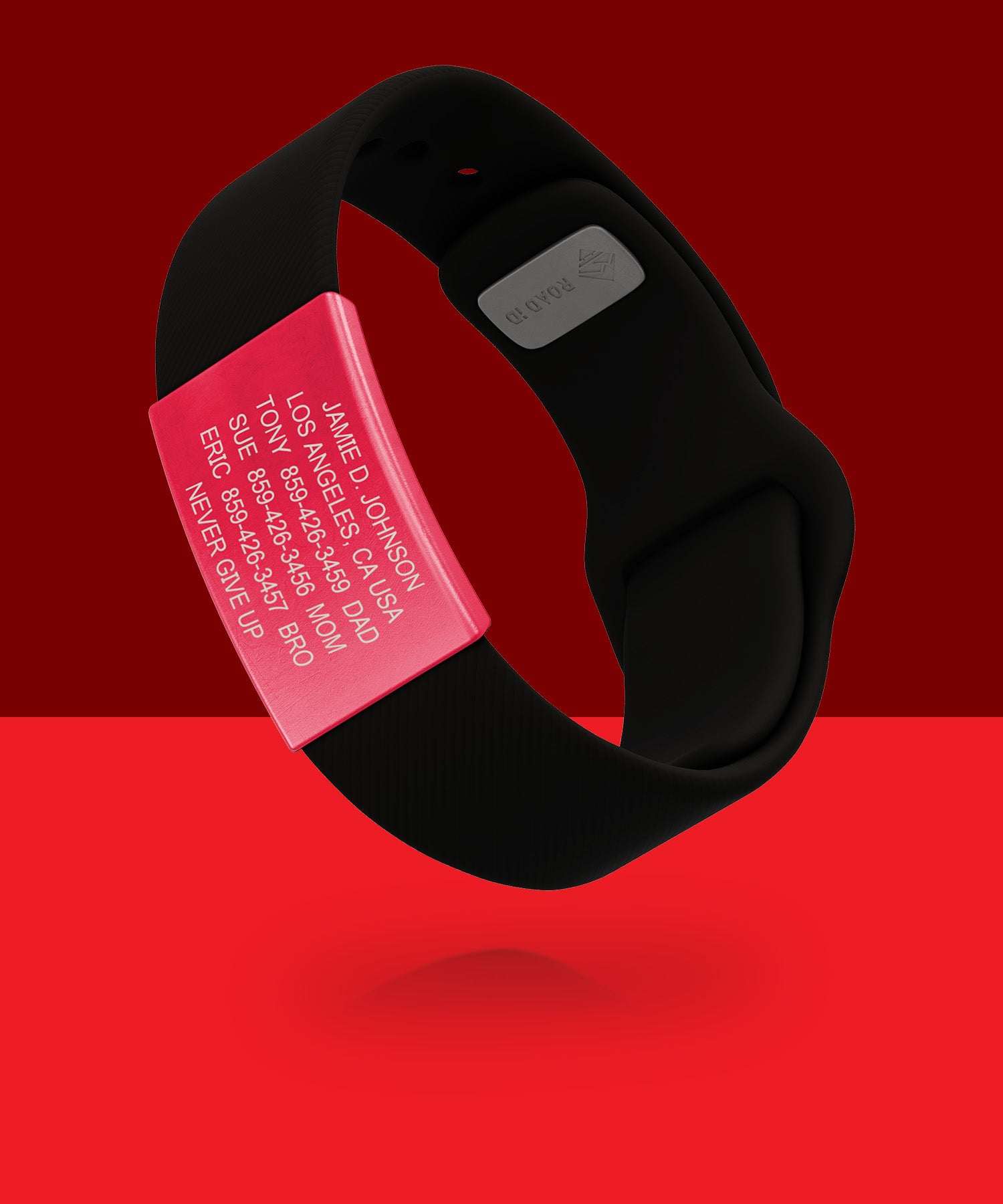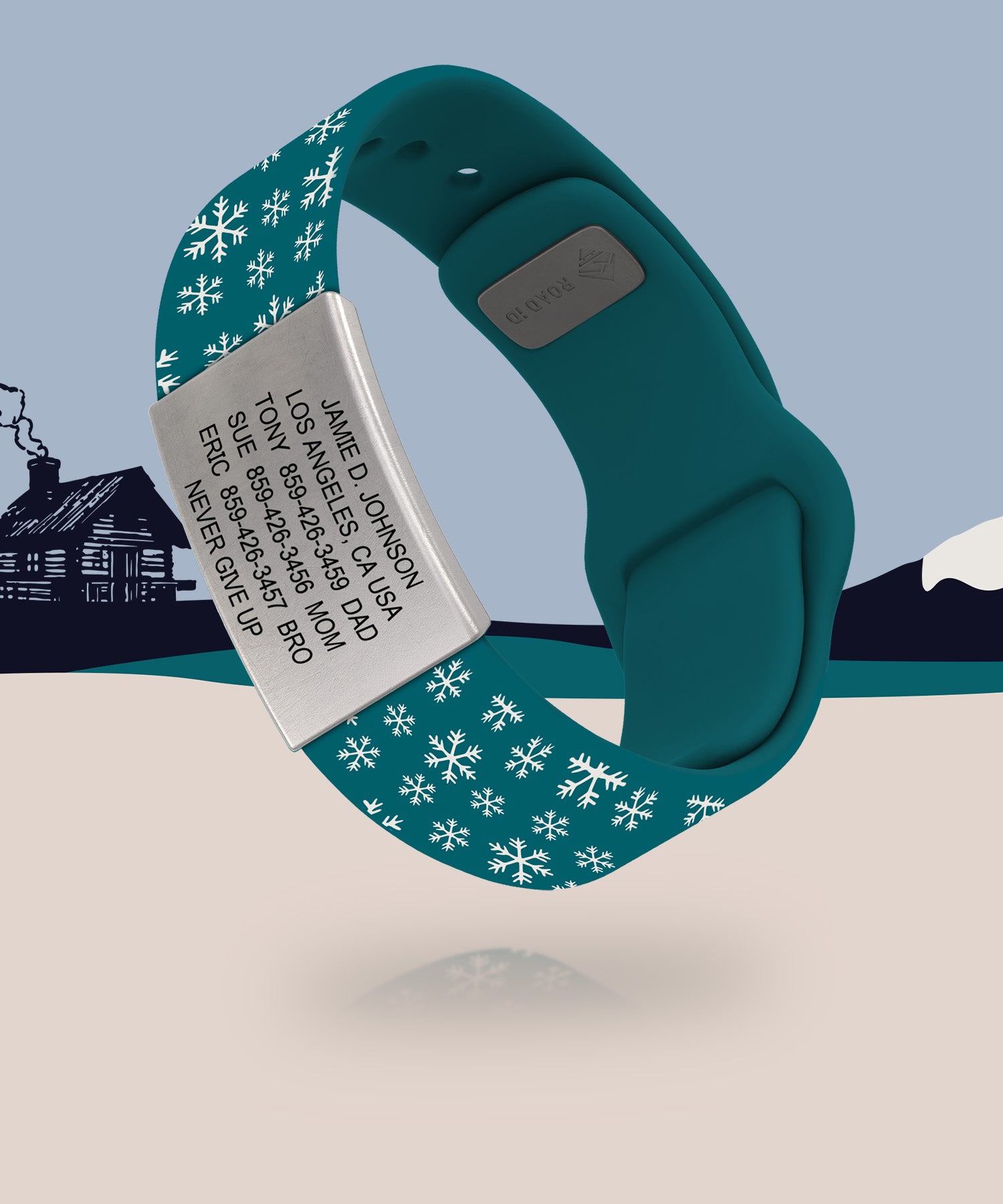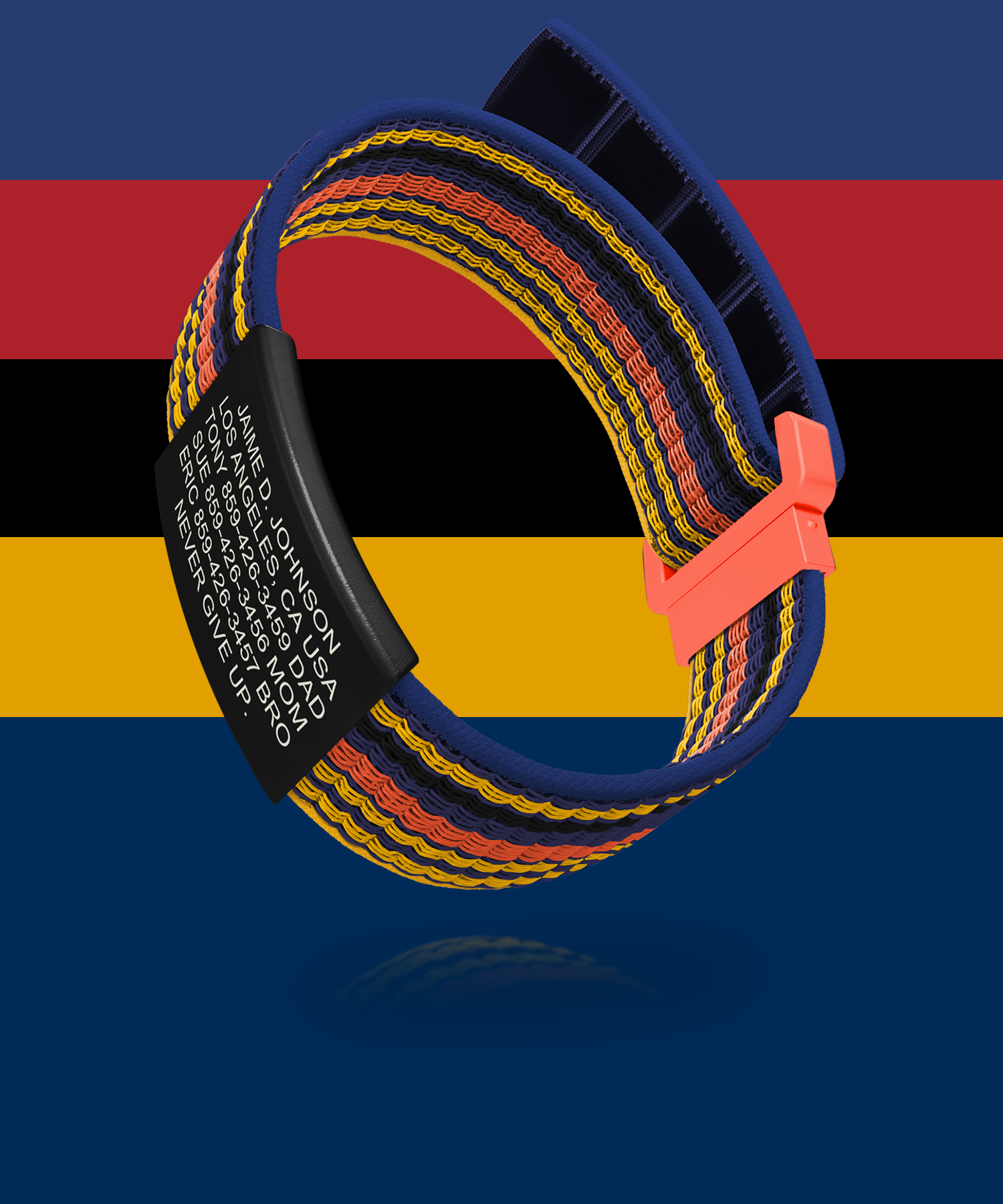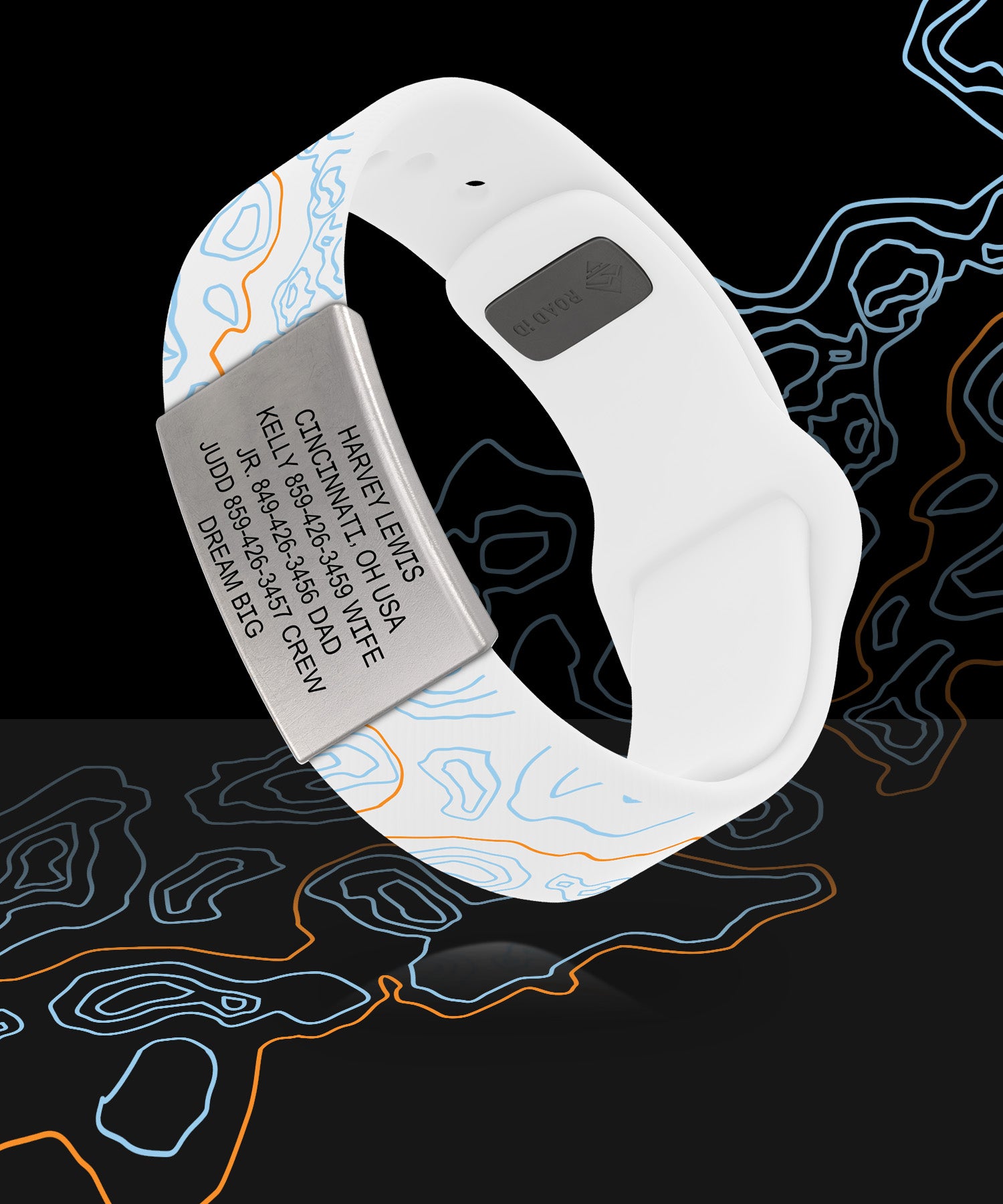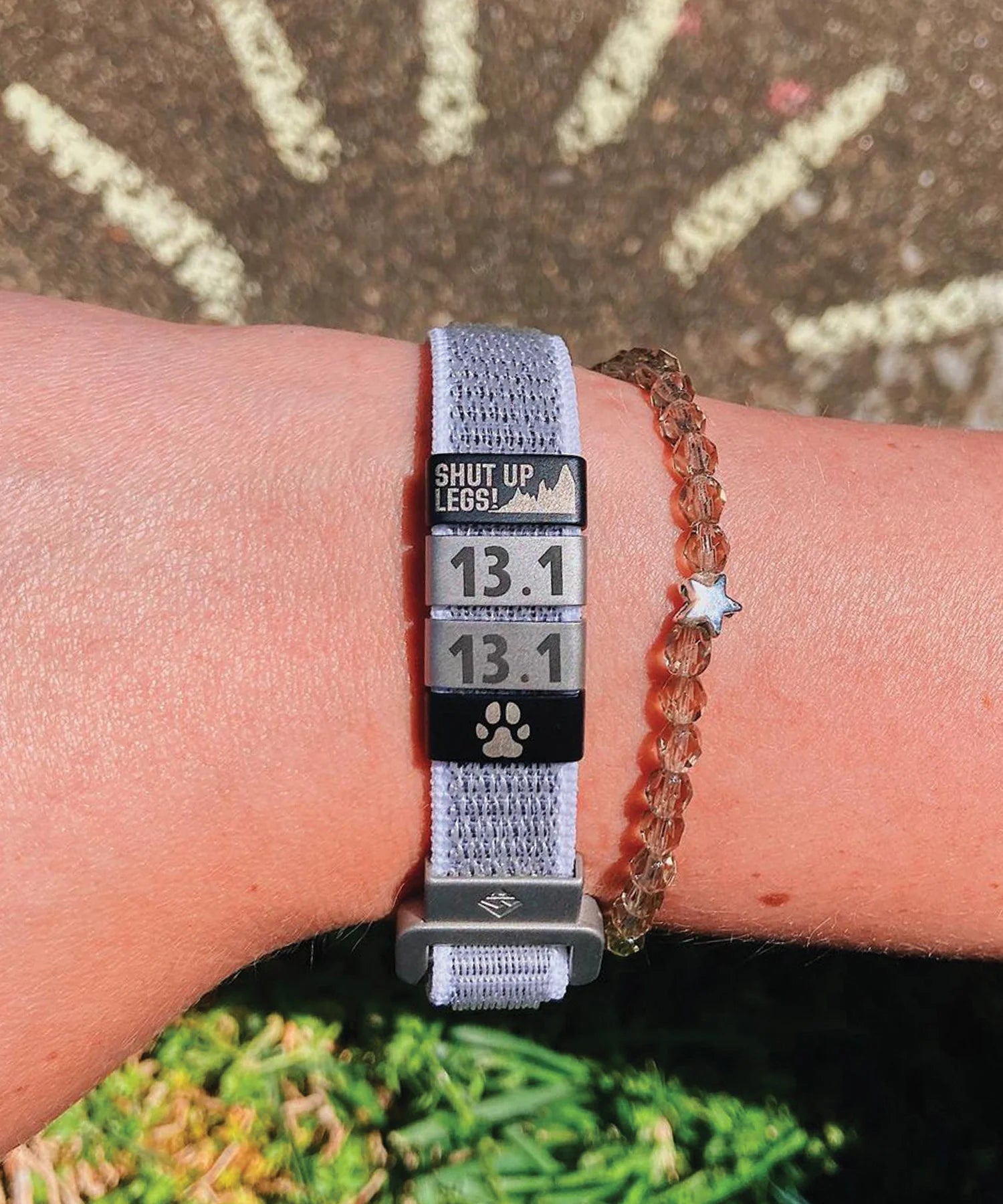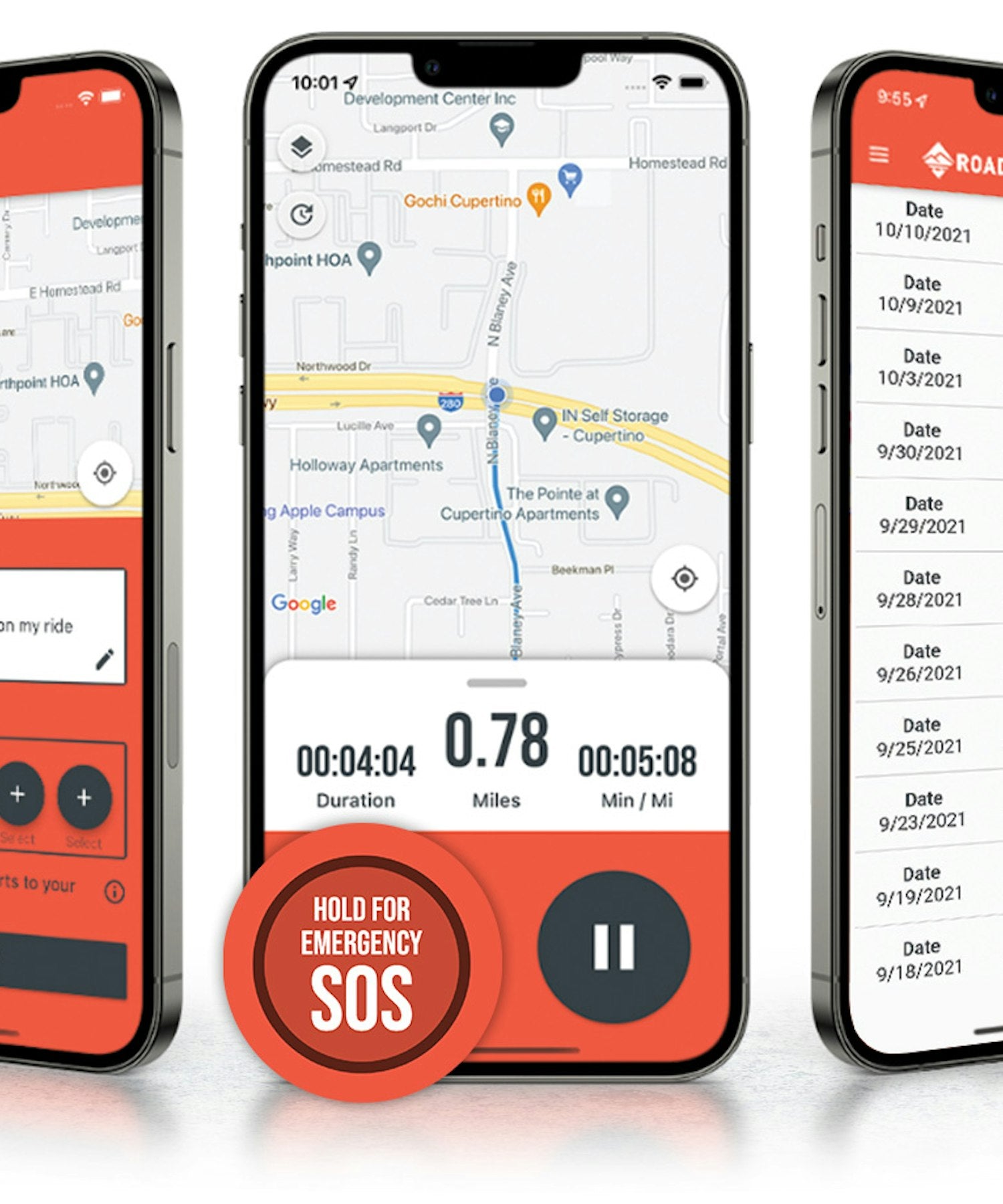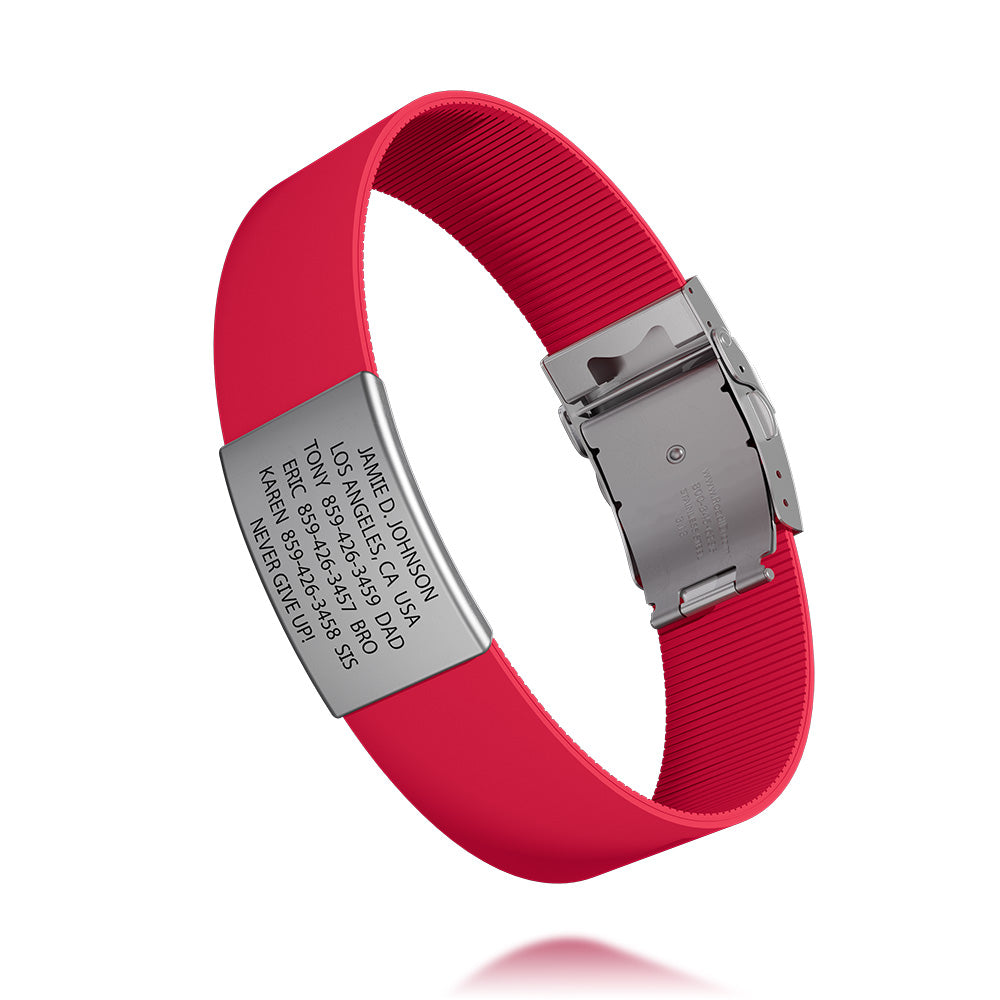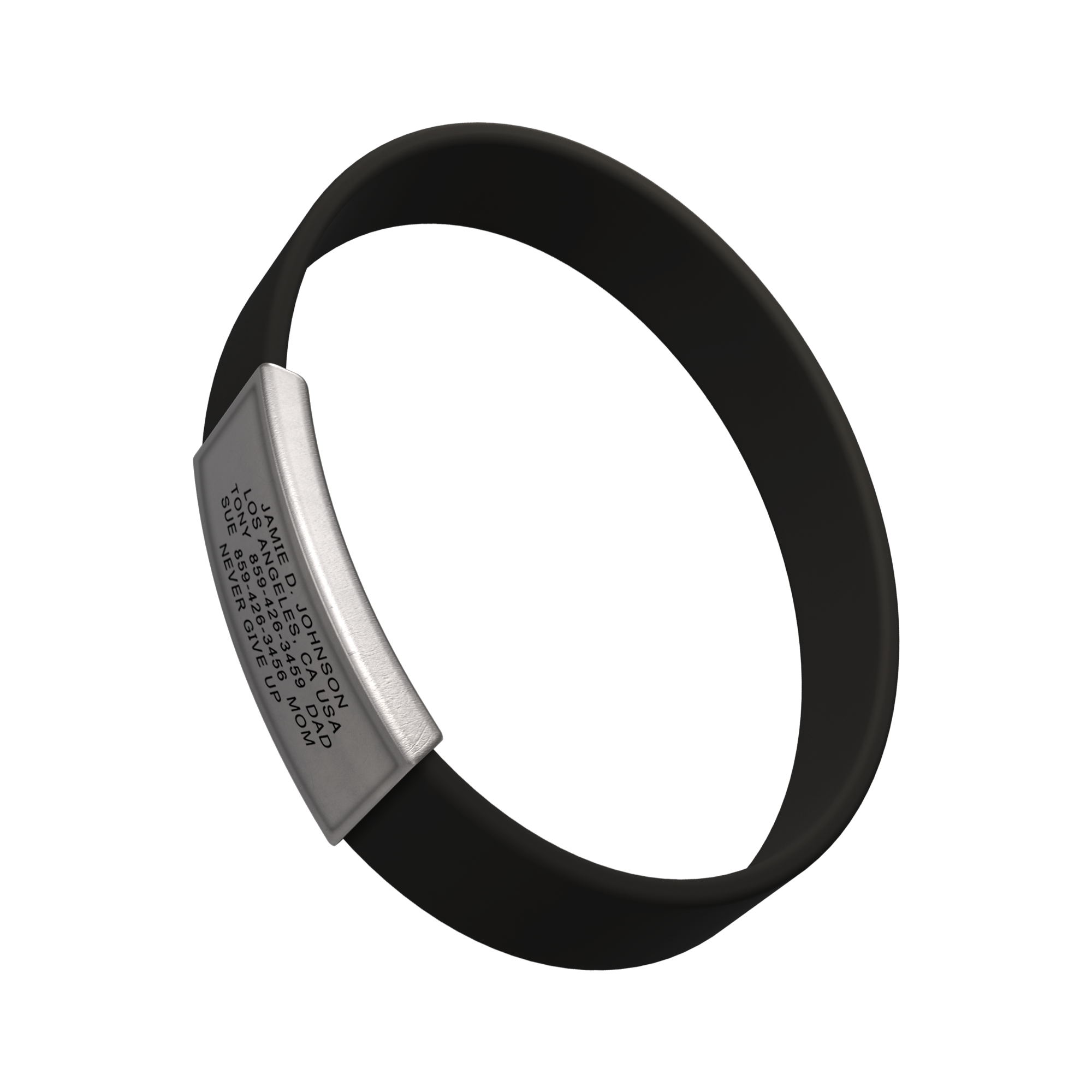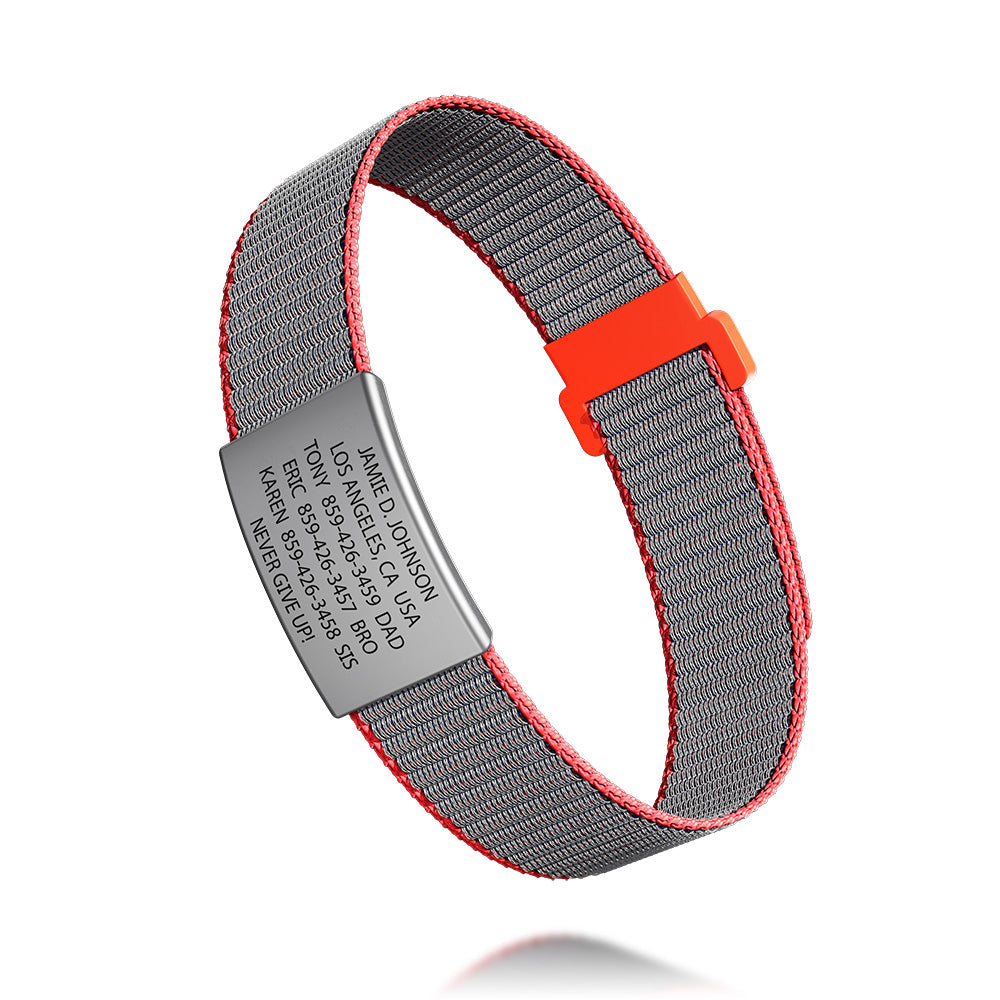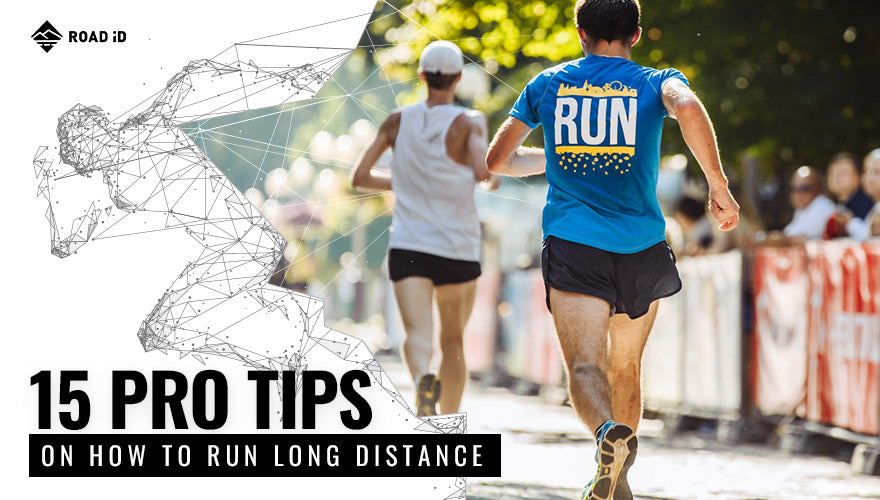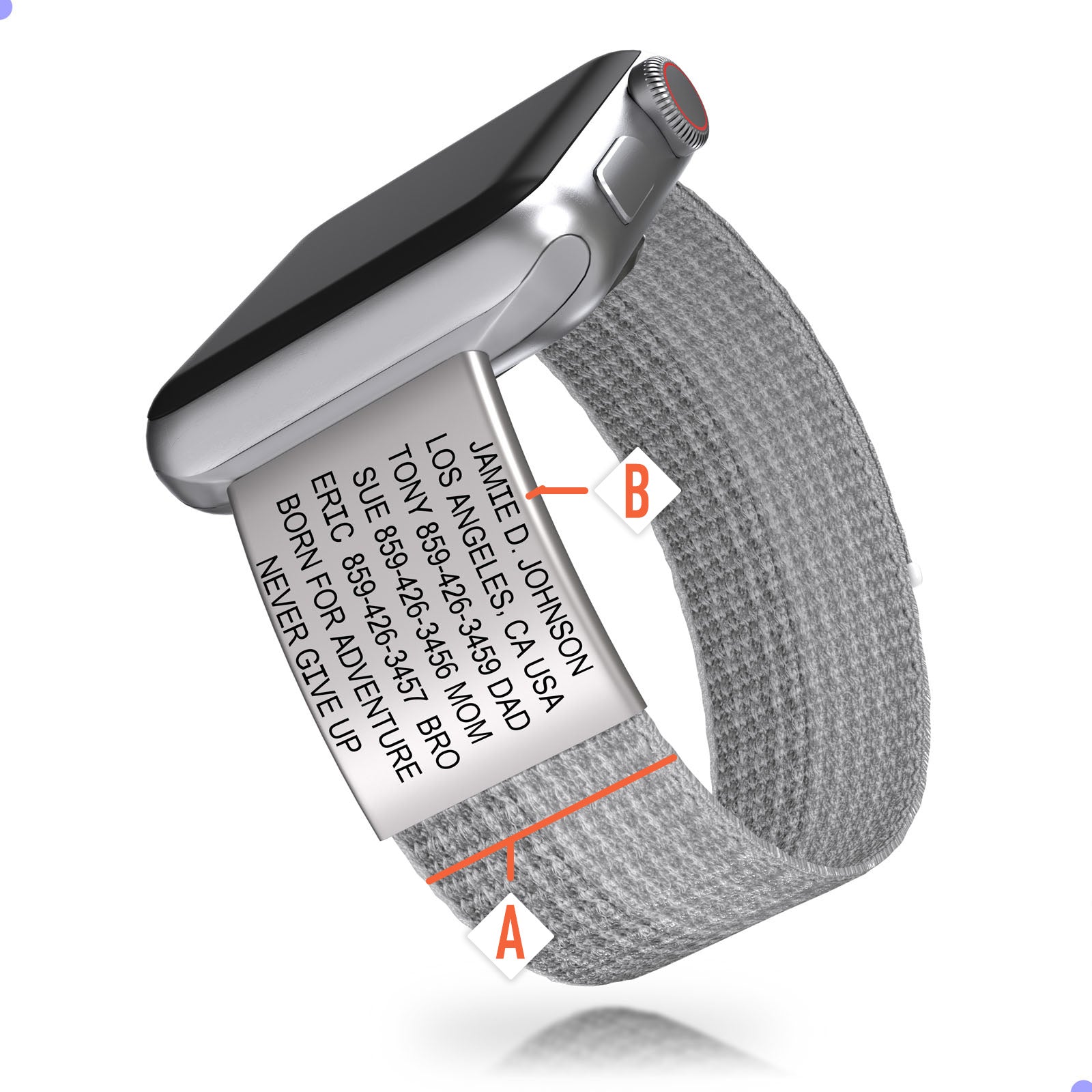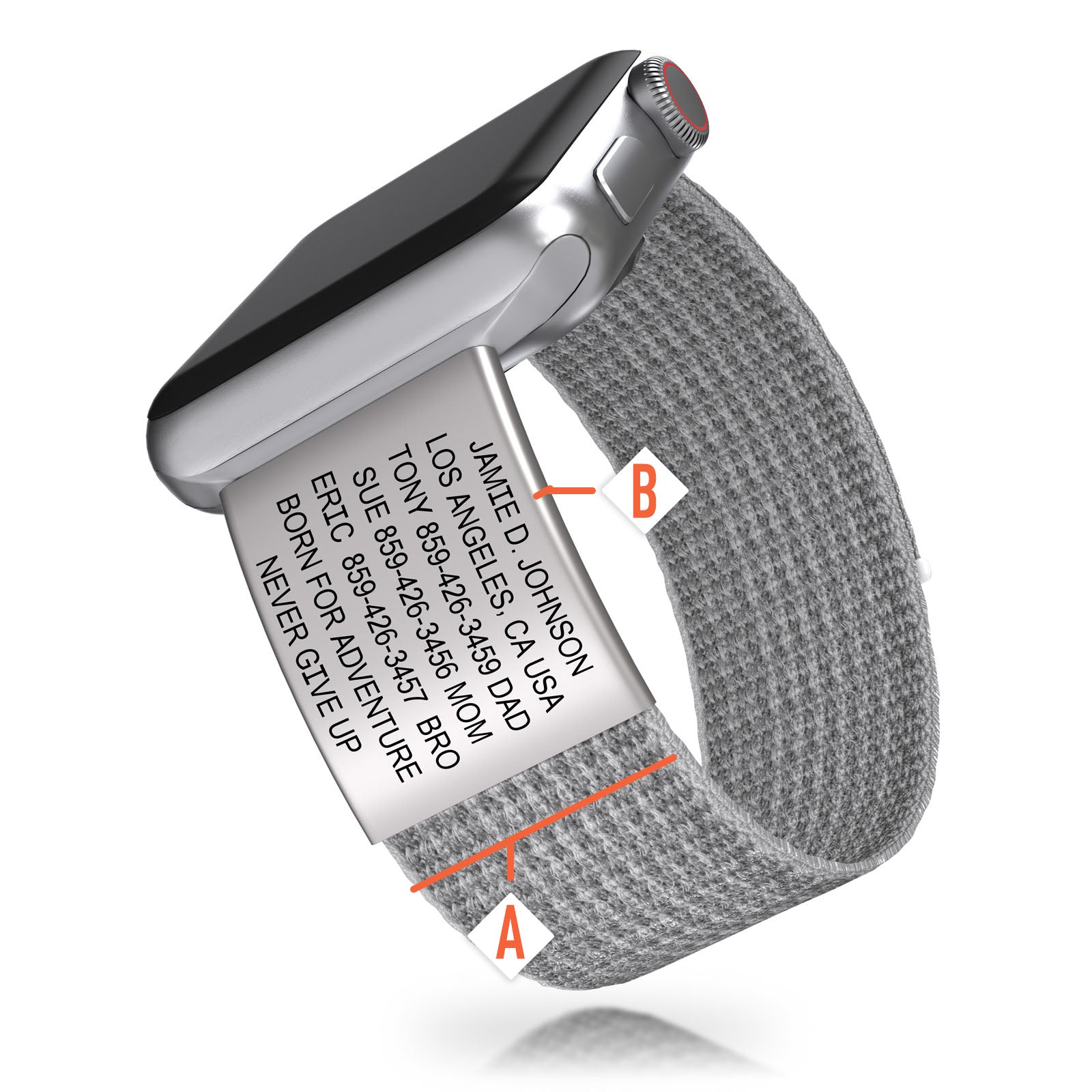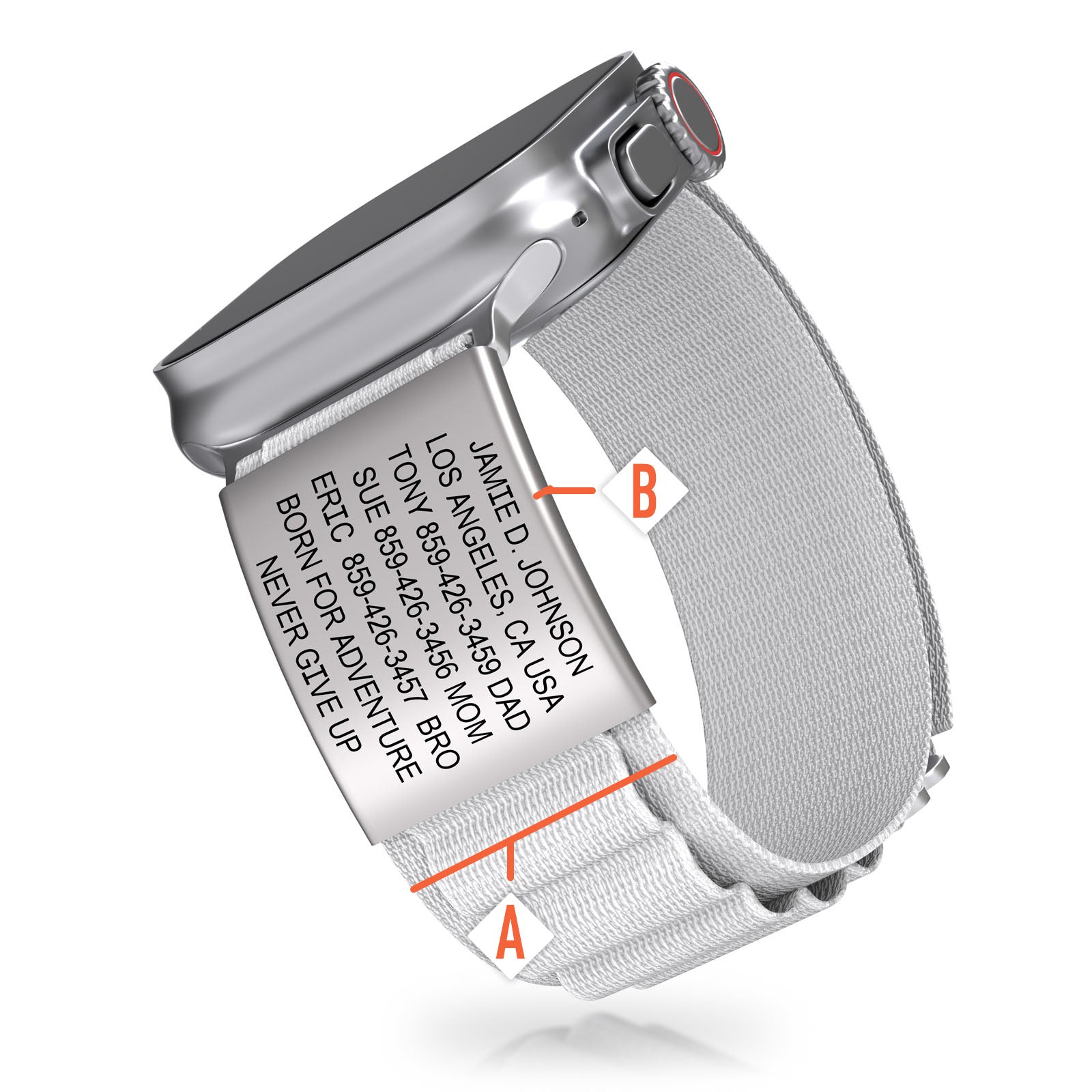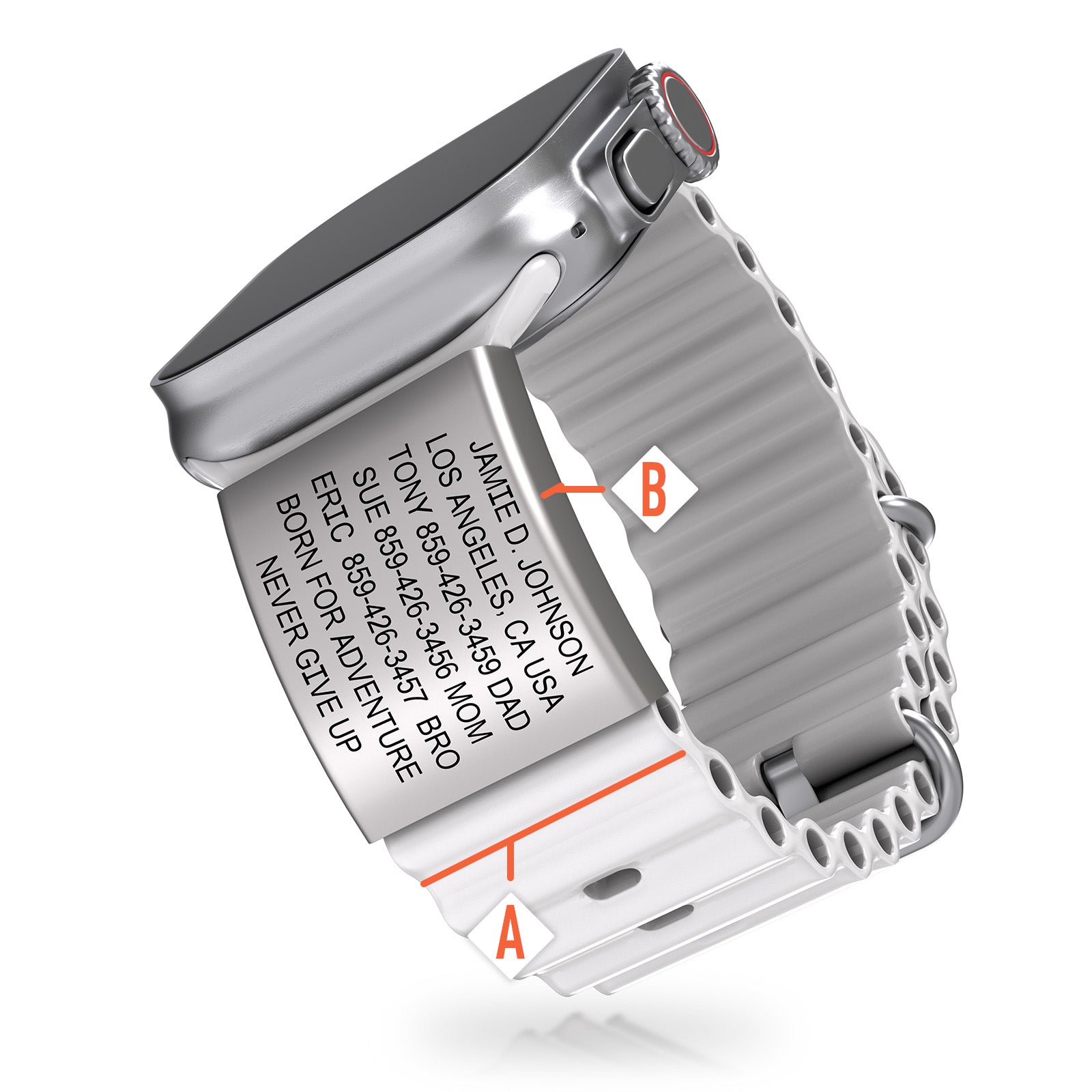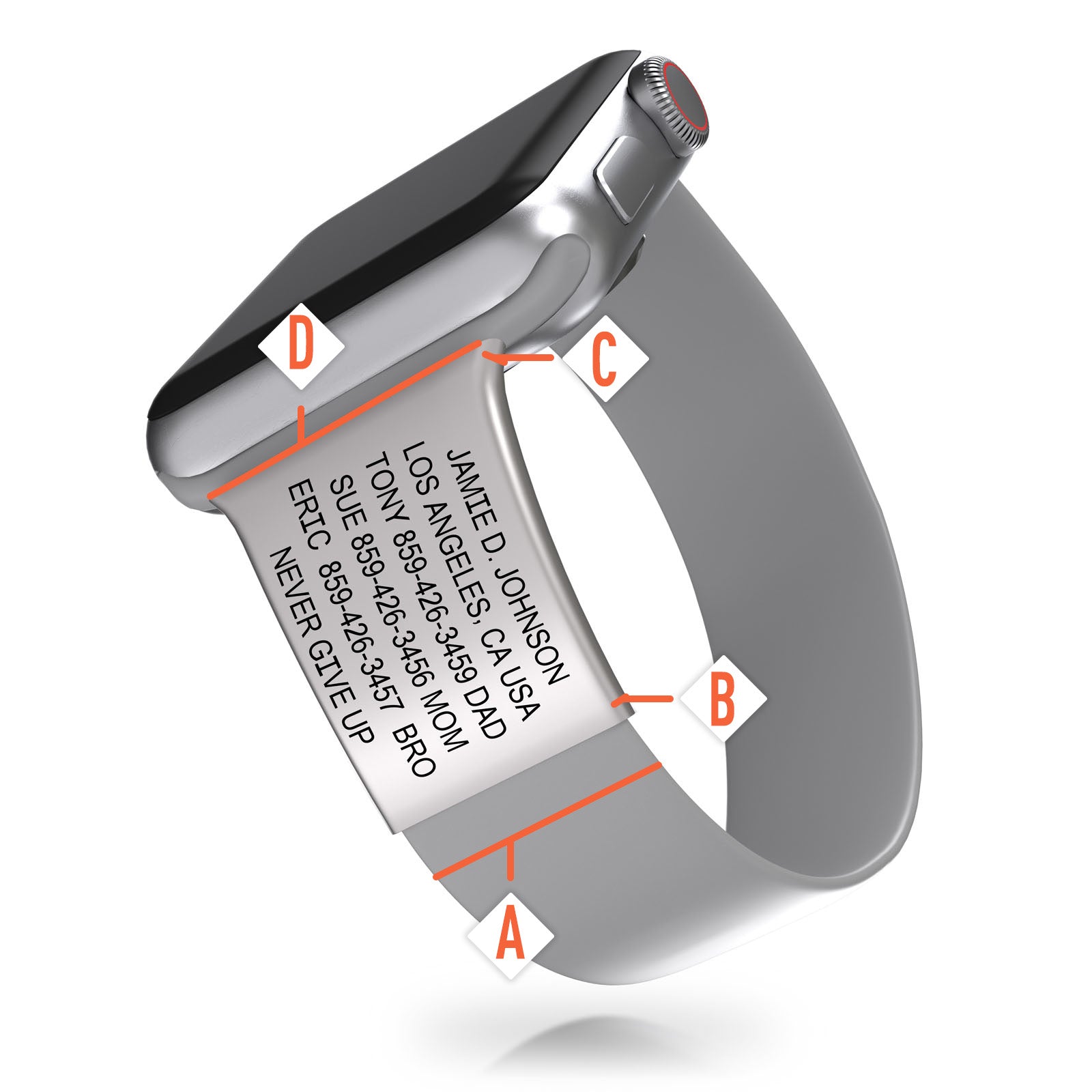
Whether you’re a brand new runner or someone looking to get into running, you’re probably wondering how to run long distance. It seems like such a feat, right? To just suddenly be able to run a marathon like it’s no big deal?
There’s a keyword in there that you need to consider: suddenly. Becoming a long-distance runner doesn’t happen overnight. The life of a long-distance runner is made after months, years and decades of consistent training.
What do you have to do to run long distances? The right gear, personal safety devices like medical bracelets, altitude training and gradually increasing mileage are safe ways to run long distances.
1. Get shoes that are right for you
First and foremost, you need the right running shoes. This is one of the best ways to protect your feet, ankles and knees, as it can prevent you from running with improper form. The right shoes are essential for runners, especially for those who overpronate — where your arch collapses when you take a step, leading to you pushing off on the inner ball of your foot (off of your big toe).
Unsure what shoes are right for you? You should get fitted for running shoes. Run specialty stores will have employees who will watch your feet and knees while you walk and run. They’ll also scan your feet to see the structure of your foot and arch while you are standing. Based on this and more information (such as if you want a shoe with more or less padding), they will determine what shoes are right for you.
Shoes are often broken into two groups: shoes for those with “normal” arches/supinators and shoes for overpronators. After that, it’s deciding whether you want a low-profile shoe, a shoe with medium padding or a high-padding shoe. They can also be chosen based on their heel-toe offset, too. The employee will be able to tell you more, but higher offsets are good for people who deal with regular Achilles tendon strains.

2. Wear comfortable clothing
As well as wearing the right shoes, you also want to wear comfortable clothes. A major issue for people trying to tackle long-distance running is they’ll eventually struggle with chafing. Chafing is often caused by cotton clothing, which will become scratchy when moist. To avoid this, you should wear moisture-wicking clothing, which is commonly made of merino wool. Merino wool shirts are incredibly comfortable, but you absolutely need to be wearing moisture-wicking socks to protect your feet.
3. Understand your goals before you begin
From here, you’d expect to jump into creating a training plan. But before you begin planning, you need to understand what it is you’re planning for.
How long do you want to be able to run for? Are you looking for mileage, pacing or overall time spent running? Do you want to simply run for fun or do you want to be competitive? Also, are you interested in races? If you are, what distance, and do you want to just tackle the distance or do you want to try and win the races you enter?
4. Create a basic training plan
Once you’ve answered the above questions, you can begin work on your training plan. There’s a number of things you want to consider, from what your baseline mileage is to how far you’re trying to run. Your best bet is to simply start small, if you haven’t started at all. Try to run a mile or two a day and see how you feel. If you feel great with that, you can go up to three miles. The general rule of thumb is to not go over 10 to 15 miles in a week if you’re starting at zero weekly mileage.

5. Pace yourself
One of the simple ways to get into your training plan is to watch your pace. A watch, even an Apple Watch, makes it easy to track your per-mile pace to see where you are. A good rule of thumb, when you don’t know your base per-mile pace, is to run to where you could still carry a normal conversation with another person. If you’re wheezing, you need to slow down.
Best of all, you can even attach an Apple Watch medical alert bracelet to carry your personal information with you where you go so you can leave your ID at home.
6. Track your run
Similar to wearing a watch to track your pace, you should also consider getting a more intelligent watch which can also track your mileage and map your run for you. GPS watches are preferred by runners because they make this process as easy as possible. When matched with an app like Strava, runners can collect their data and evaluate to better fine-tune their training. This includes tracking their mileage, elevation, pace and more.
7. Increase in due time
While working up your mileage, you need to understand that you shouldn’t overdo it. The rule of thumb among pro athletes is to never increase your mileage or pace by 10 percent — and never at the same time. Why? You increase the stress your body is under whenever you increase your pace or weekly mileage. Similarly, you should never compound the amount of stress you’re loading on your body. So choose one and hold off on the other. For instance, if you’re running, on average, 7-minute miles for 30 miles a week, you can:
- Week one: increase mileage to 33 miles while keeping pace at 7-minute miles
- Week two: increase pace to 6:45-minute pace while remaining at 33 miles
- Week three: increase mileage to 36 miles while remaining at 6:45-minute pace
- And so on
8. Don’t just start running and cool down after
A common misconception among runners is that you need to fully stretch out prior to starting your run. If you’re already doing this, stop it! Stretching cold muscles can lead to injury, as you’re essentially trying to stretch something that is currently tight and static. Instead, you should do some dynamic stretches prior to starting your run. This includes basics like hopping and bouncing. It doesn’t sound like much, but it’s a simple way to get your blood flowing while getting your muscles activated for greater movement.
Similarly, you need to remember to cool down after your run. What does this include? Well, now is the time for static stretching. Rather than doing static stretching while your muscles are cold, you should be doing it after your muscles have warmed up.

9. Good posture is essential
Good running posture is essential to safely running long distances. There’s a few things you should do while running to regularly check your posture:
- Stay upright — You should slightly bend forward at your waist, but your back should still generally be straight. Think of it as “you shouldn’t be sitting back in the driver’s seat.”
- Try to land on the balls of your feet while you run rather than your heels.
- Make sure that your feet are landing under you whenever you take a step, as you want to avoid adding extra stress on your knees.
10. Altitude seriously helps
If possible, you should try and get some altitude training into your weekly regimen. It’s been found to help runners with their overall strength, speed and endurance. If you live in a city environment, it can be as simple as running repeats up a small set of stairs or a smaller hill. If you can get into a forested or mountainous area, running repeats up larger hills can truly do numbers for you.
11. Remember to work on your turnover
Turnover? This is how quickly your legs are moving while you’re running. Watch the random runners you see day to day. What do you see? They’re often taking fewer steps, maybe 100 to 120 steps per minute (SPM). It looks a little awkward and you wonder how their knees must feel.
That’s the thing — there’s a certain rate of steps per minute you should aim for. Most professional runners run anywhere between 160 to 180 SPM. Why? It conserves the most mechanical energy, all while ensuring they spend less time on their feet, thus transferring less stress to their knee and quadriceps.
A good way to train yourself to run at 160 to 180 SPM is to run with a metronome or music that has the same BPM. If you’re not there currently, slowly work your way up to it.

12. Recovery is essential
While you want to keep increasing your distance, you also need to remember that rest is essential to improving as an athlete. The best runners don’t run hard every day. They take off days where they run much slower — many others take full days off.
If you’re just starting out, consider doing four days on and three days off. After a few months, you can go on to five days on and two days off. After enough time, you may even decide to go to six days on and one day off. If so, a 45-mile a week runner’s schedule may look something like this:
- Monday — 6 miles with a one mile warm-up, three 3-minute paces at race pace and a 0.5-mile cool-down
- Tuesday — 8 miles at a slower pace
- Wednesday — 6 miles with a one mile warm-up, two 4-minute paces at race pace, six 1-minute paces at race pace and a 0.5-mile cool-down
- Thursday — 7 miles at a slower pace
- Friday — 6 miles with a one mile warm-up, five 2-minute paces at race pace and a 0.5-mile cool-down
- Saturday — 12 miles at a slower pace; take it easy
- Sunday — REST

13. Your personal safety comes first
You need to remember that accidents and injuries happen while running, whether it’s a pothole you didn’t see, a distracted driver or an underlying medical condition that strikes during your run. Don’t take risks, whether you’re on the trail or road. Protect yourself by carrying your personal and medical information with you wherever you go. Our medical alert bracelets make it easy to protect yourself by carrying your medical information with you at all times.
14. Don’t be hard on yourself if you need to reschedule
Listen, if you’re feeling worn out on a given day, don’t worry about it. You shouldn’t feel bad about taking a day off. We all need recovery and it’s important for you to listen to your body.
However, if it just feels like your mind isn’t into it that day, you should still consider getting outside. Even if it’s for just three, slow miles, it’s still worth it.
15. Clean up your diet
Running burns a lot of calories — approximately 100 calories per mile. If you’re running long distance, say 50 miles a week, that’s approximately 5,000 calories burned per week (on top of your basal metabolic rate). A pound of fat is approximately 3,500 calories, so if you’re not eating enough, you’ll see yourself losing weight at an unhealthy rate. It’s a good idea to track your calories when you start out, as it will give you an idea of how much you’re eating and whether you should be eating more — because food is energy!
Similarly, clean up your diet. Cut out the heavily processed foods and go for fruits, veggies, whole grains and healthy protein instead. Round out your diet with enough carbs and fat, as your body will use both as energy. Also, remember to drink enough water every day!
If you want to run long distances, it all starts by putting one foot in front of the other. A little planning and some basic rules will make it easy to get started. So lace up, hydrate, get some calories in you and hit the road. You’ll see those miles stack up in no time.
Image Credits
KieferPix/Shutterstock.com
Liu zishan/Shutterstock.com
Aleks shutter/Shutterstock.com
oneinchpunch/Shutterstock.com
lzf/Shutterstock.com
NDAB Creativity/Shutterstock.com
